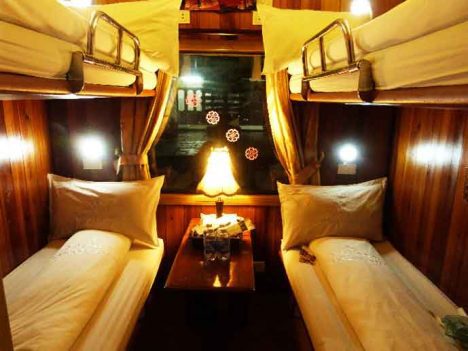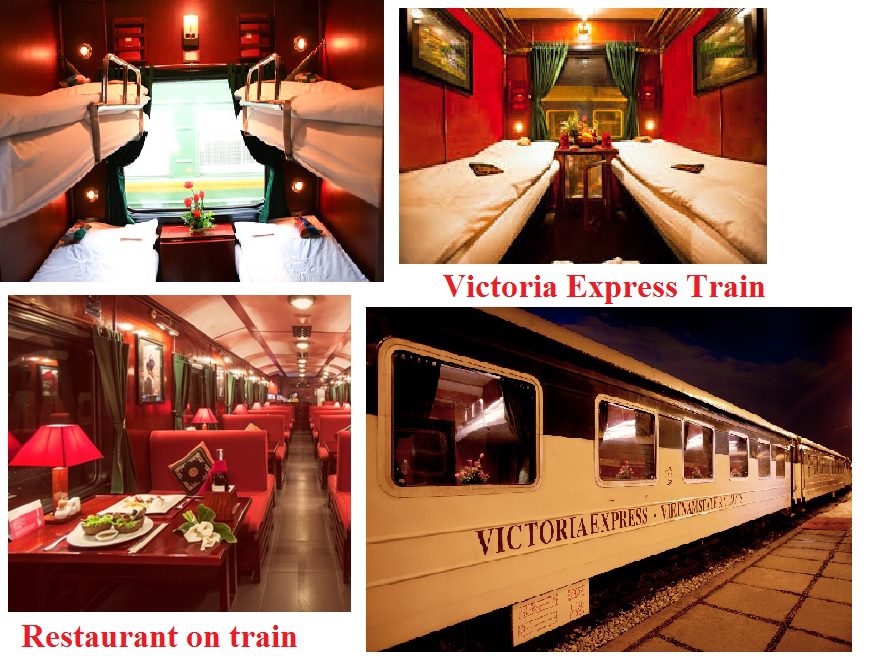Vietnam’s railway network is one of the best ways to explore the country in a relaxed, scenic and affordable way. From historic roots to modern tourism, trains offer a unique perspective into the nation’s geography and culture. Whether you’re planning a scenic ride through the mountains or a long journey along the coast, this comprehensive guide covers everything you need to know.
Vietnam’s railway system dates back to the late 19th century during the French colonial period. The first line opened in the 1880s, and by the 1930s, the country had an extensive rail network linking major cities. Though heavily damaged during wartime, efforts have been made to rebuild and modernize the network.
Vietnam has over 2,600 kilometers of railway, most of which is meter gauge. The system connects Hanoi in the north to Ho Chi Minh City in the south and branches off to key cities like Hai Phong, Lao Cai, Da Nang, and Hue.
Vietnam Railways (VR) is the state-owned operator, responsible for most train services across the country. It offers various classes and services to cater to both locals and tourists.

SE train passing Hai Van Pass

Enjoying coffee on Train Street is one of the reasons why you should visit Hanoi
🌟 Tourist Trains
For travelers seeking a more luxurious and comfortable train experience in Vietnam, tourist trains are an excellent upgrade from standard rail services. These trains are specially designed with foreign visitors in mind and are particularly popular on the Hanoi – Lao Cai route, the gateway to the mountainous town of Sapa.
The Luxe Train Express offers one of the most refined travel experiences between Hanoi and Lao Cai. Passengers enjoy well-appointed cabins featuring high-quality bedding, wooden paneling, soft lighting, and a peaceful ambiance. Each compartment typically accommodates four berths in a soft sleeper configuration, with options for private cabins for couples or small groups. Complimentary water, snacks, and toiletries are often included, and attentive staff are on board to assist passengers throughout the journey.
Another premium choice, the Sapaly Express, is known for its cozy yet elegant interiors inspired by European design. With twin and VIP cabins, passengers can enjoy privacy, air-conditioning, and plush linens. The train also provides slippers, refreshments, and in some cases, hot towels. The Sapaly is popular among honeymooners and families seeking a quieter and more relaxed travel environment compared to regular trains.
Operated by the Victoria Hotels & Resorts group, the Victoria Express is arguably the most exclusive tourist train in Vietnam. Although now running on a more limited schedule, it continues to offer exquisite wood-paneled carriages, gourmet meals, and top-notch service. Access is often bundled with stays at the Victoria Sapa Resort, making it ideal for those opting for a seamless luxury travel package.
These trains are ideal for those who value comfort, service and atmosphere, especially during overnight journeys. Seats are limited, so early booking is highly recommended – particularly during weekends and holidays.
🛌 Available Classes

A 4-berth cabin with bedding and air-conditioning on a night train to Sapa
🌐 How to Book
📈 Useful Platforms: www.dsvn.vn (Official site)
⏰ Advance Booking Tips
🌎 Typical Costs
💳 Discounts & Passes
😐 Local vs Foreigner Pricing
✅ Are Trains On Time?
⏳ Buffer Time Tips

Victoria Express train to Sapa (Hanoi – Lao Cai – Hanoi)
🛋 Amenities
✨ Cleanliness & Comfort
⌛ Overnight Train Tips
🍽 Food Options
🌋 Hai Van Pass (Da Nang – Hue)
🌳 Hanoi – Lao Cai
🏖 Nha Trang Coastal Line
💬 Interaction with Locals
🛡 Security Tips
💬 Quiet Hours in Sleepers
👠 Shoe Etiquette
| Feature | Train | Bus | Flight |
| Comfort | ⭐⭐⭐ | ⭐⭐ | ⭐⭐⭐⭐ |
| Scenery | ⭐⭐⭐⭐⭐ | ⭐⭐ | ⭐ |
| Cost | ⭐⭐⭐ | ⭐⭐⭐⭐ | ⭐⭐ |
| Time | ⭐⭐ | ⭐⭐ | ⭐⭐⭐⭐⭐ |
Trains are ideal for a scenic, cultural experience. Buses are budget-friendly. Flights save time but miss out on landscapes.

Train in Vietnam
When you travel to Vietnam, taking the train isn’t just a way to get from one place to another – it’s a rich and immersive part of the adventure itself. Vietnam’s railway system offers a window into the country’s soul, connecting vibrant cities, lush countryside, and dramatic coastlines in a way no other transport can. From the bustling heart of Hanoi to the energetic rhythm of Ho Chi Minh City, train routes crisscross the country, revealing scenes of daily life: farmers tending rice paddies, children waving from village crossings, and stunning landscapes unfolding outside your window. Whether you’re riding along the misty mountains to Sapa, passing the turquoise waters near Nha Trang, or watching the sunrise over the Hai Van Pass, the journey becomes a story of its own. Many Vietnam tours now include scenic train rides as part of the itinerary, especially for travelers who want a deeper connection with the land and its people. Compared to buses or planes, trains offer a slower pace, but a richer reward – more space, real-life encounters, and unforgettable views. If you’re planning to travel to Vietnam, consider hopping aboard one of its iconic trains. It’s not just about reaching your destination – it’s about discovering the rhythm of Vietnam, one track at a time.
| Train Information | (US$)Price with Air Condition | |||||
| Departe From | Return To | Train Name | Train Days | Train Time | Soft Seat | Soft Berth |
| Hanoi | Hue | SE1 SE3 SE5 SE7 | Daily | 19:00 23:00 12:25 05:55 | 24 26 20 17 17 | 38 40 29 28 28 |
| Hanoi | Nha Trang | SE1 SE3 SE5 SE7 SE9 | Daily | 19:00 23:00 12:25 05:55 13:30 | 41 43 32 30 30 | 65 69 55 53 53 |
| Hanoi | Danang | SE1 SE3 SE5 SE7 SE9 | Daily | 19:00 23:00 12:25 05:55 13:30 | 26 27 21 19 19 | 40 42 34 32 32 |
| Hanoi | Saigon | SE1 SE3 SE5 SE7 SE9 | Daily | 19:00 23:00 12:25 05:55 13:30 | 49 50 39 36 36 | 70 73 66 64 64 |
| Hanoi | Laocai | SP1 SP3 SP5 SP7 | Daily | 21:10 21:50 19:40 20:35 | 0 0 0 0 | 30 30 30 30 |